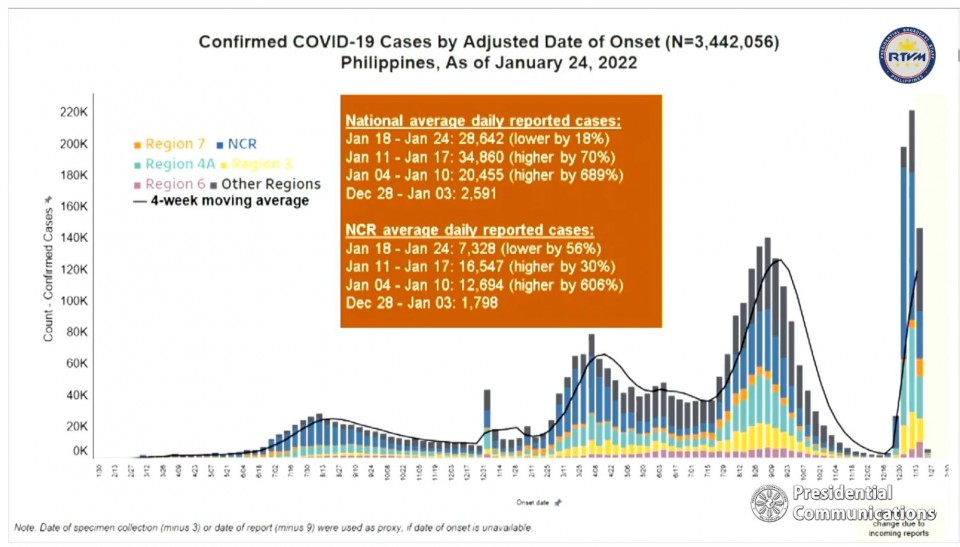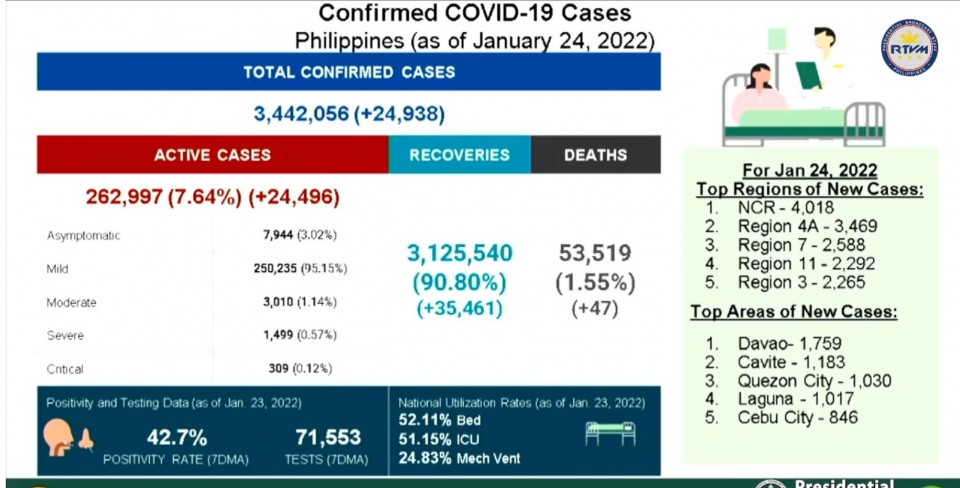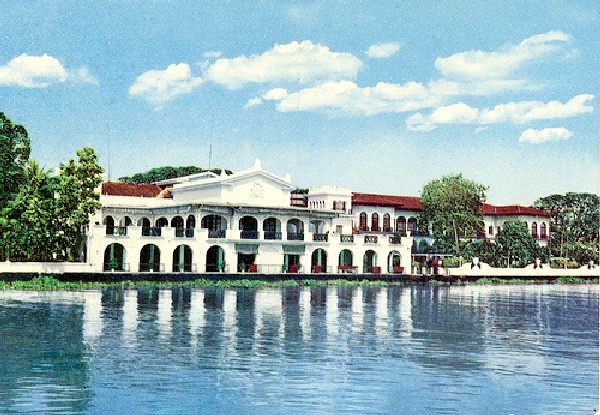Davao City topping other areas with high number of new Covid-19 cases on Jan. 24 alarms President Duterte

(Eagle News) – The Philippines is now classified under high-risk classification from critical risk classification due to a decrease in the percentage of the two-week growth rate of Covid-19 cases, and daily reported cases on the national average.
Health secretary Francisco Duque III noted the decrease in the country’s two-week Covid-19 growth rate to 178 percent, while the average daily attack rate (ADAR) is at 25.46.
The national average of daily reported cases went down the past week at 28,642. This was lower by 18 percent compared to the previous week’s daily average of 34,860.
-Marked decrease in Covid cases in NCR-
Duque also pointed how the decrease in daily reported cases is more marked in Metro Manila.
From January 18 to 24, the average daily reported number of cases is 7,328. This is lower by 56 percent compared to the average daily reported number of cases the previous week at 16,547.
“Una, ang bansa ay bumababa na sa high risk case classification mula sa critical risk. Habang ang ating healthcare utilization rates naman ay nananatili na low to moderate risk habang may ibang rehiyon na nasa high risk naman,” Duque reported to President Rodrigo Duterte during the latter’s Talk To The People on January 24.
Duque said that Metro Manila or the National Capital Region still topped the regions with the highest contribution in terms of number of cases, followed by Region 4-A or Calabarzon, and Region 7 or Central Visayas region. This was for the January 24 data.
Davao City with highest number of new Covid cases-
However, on a per city or area basis, the highest number of cases for that day was noted in Davao City, followed by Cavite and Quezon City.
This news made President Duterte to clarify with Duque if what he referred to was Davao region, the province or the city.
“Davao City ito, Mr. President,” the DOH chief said citing the 1,759 new cases recorded in Davao City on January 24.

Cavite City was next with 1,183 recorded new cases, followed by Quezon City with 1,183 new cases on January 24.
-NCR, rest of Luzon Covid cases plateau –
While Metro Manila and the rest of Luzon are already on the plateau in terms of new Covid cases, the virus cases in the Visayas and Mindanao regions however are on the rise.
In the Philippine capital region, the epidemic curve seemed to have peaked sometime in January 14 and 15. Since then, the Covid numbers have been decreasing. The same is true for the NCR plus areas of Bulacan, Rizal, Laguna and Cavite. The rest of Luzon is also exhibiting the same trend.
“Sunod naman po ‘yung rest of Luzon nakikita po natin dito, nag-umpisa na rin pong mag-plateau. Hopefully, ito bumaba na rin in the coming days,” Duque said.
In Visayas and Mindanao, cases are on the rise. These are the regions that the DOH is closely monitoring. It is advising hospitals, health officials and local chief executives in the region to increase health care capacity by adding more Covid-19 beds, and also by intensifying the “prevent, detect, isolate, treat, reintegrate, and vaccinate interventions.”
(Eagle News Service)







